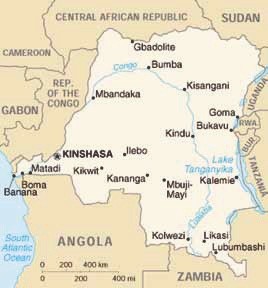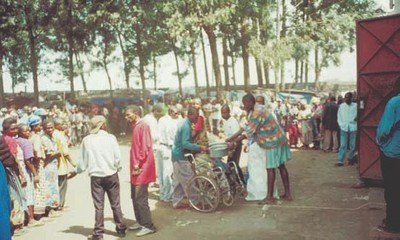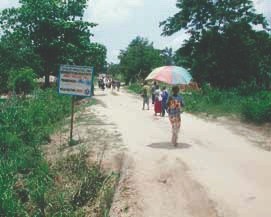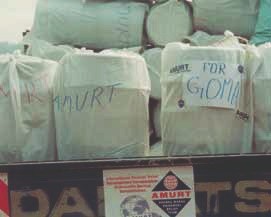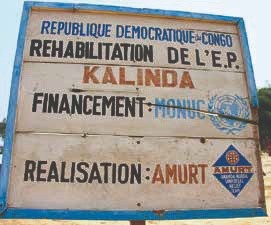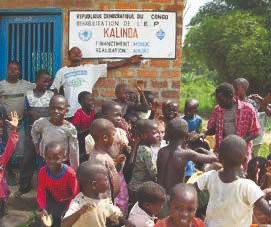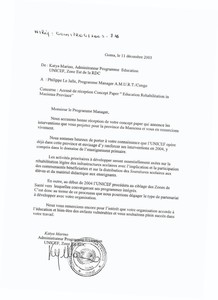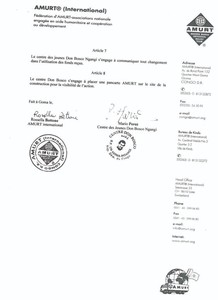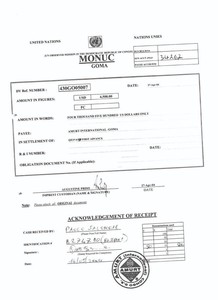
Disaster relief, food aid, rehabilitation of roads and bridges, school renovation, building houses for orphans
Project in numbers
| heading of table | |
|---|---|
| label | number |
Location
Goma, Kindu, Congo DR
Project Duration
2002–2006
Emergency aid for volcano victims
In 2002, in the eastern region of Democratic Republic of Congo (DRC) near the border with Rwanda and the Congolese town of Goma, the Nyiragongo volcano erupted. Approximately 400,000 habitants lost their homes or any kind of possession. In addition, the lava contaminated the water supply leaving the area without any source of potable water. AMURT intervened with emergency relief operations that provided the population of the area with water, food and cooking utensils.
Reconstruction after the civil war
In addition to the punctual event of the earthquake, the DR Congo had also been facing the long lasting and the far-reaching effects of war. By the time of the earthquake DRC had experienced 17 years of civil war. 50 million Congolese were affected by the war, and millions more were internally displaced or sought asylum in neighbouring countries.
Despite the peace agreement of 2003 that made an official end to the combat, fighting still continues today, especially in the east and north of the country. According to a survey carried out by the International Rescue Committee, 3.8 million people died in the DRC between August 1998 and April 2004 (when the bulk of the fighting occurred). However, the majority of these deaths were preventable as they were caused by external factors such as starvation and disease, rather than from the actual fighting. AMURT assists the population in the area with relief goods and has begun to rehabilitate village infrastructures destroyed during the war.
Rehabilitation of roads and bridges
In a first phase, AMURT responded to the desperate needs of refugees, Internally Displaced Persons (IDPs), and ex-combatants. As the war ended, people wanted to return to their villages. However, since all the roads and bridges were destroyed it was virtually impossible for them to return home1. Therefore, the need for a new infrastructure within the country was indispensable for reconstruction.
In cooperation with MONUC (United Nations Mission in Congo) AMURT rehabilitated the Kasenga road, a 16 km road stretching from Kindu to Kasenga. The intervention thus far has sought to enlarge the road and to cut back bush. The program also reconstructed 7 bridges, of which three were eight meters high and 25 meters long. AMURT first cut back the bamboo and bush and then laid down gravel and sand. The newly restored road reconnected the villages along it and made the whole area more accessible for both humanitarian aid workers and IDPs/ refugees seeking to return home.
1 For instance, the Maniema province (32,500 inhabitants) has a lot of rivers – effluents of the Congo main river.
Reconstruction of two schools
During the civil war, schools were forced to close and many were even completely destroyed during attacks. As a result, the vast majority of children have never attended any school and are totally illiterate.
In 2004, AMURT reconstructed the Kalinda Primary School in collaboration with the national education service for evaluation matters and with the local community. The reconstruction process included the building of four classrooms, an office building and latrines. In addition, the organization provided material such as desks for pupils, tables for teachers and a blackboard in each classroom. Today approximately 270 children attend the new school.
In 2006, AMURT started with the reconstruction of the Misabango Primary School. This project was bigger than the previous one. In fact, the school was to consist of 6 classrooms, an office and latrines. AMURT provided the building material such as bricks, cement, roofing sheets, and pay for labour. Construction has been completed and the school has been officially inaugurated.
Construction of houses for orphans
At the beginning of 2003, the Center Don Bosco Ngangi experienced a rapid increase of malnourished children in the areas of Goma and Kindu. The children were not only suffering from severe long term undernourishment, they were also extremely dirty, barely dressed and in some cases suffering from various chronic diseases. A survey showed that the majority of these children belonged to displaced families or had lost their parents during the war2.
These circumstances made clear that it would be necessary to increase shelter space for the orphans.
Don Bosco built 42 houses for nearly 300 people, the majority of whom were children3. AMURT supported the construction of six houses for orphans and plans to construct more houses in the long run. In the future, AMURT wants to concentrate its work on children, to give them a home and provide them with education. Reconstruction of Kalinda Primary School with four classrooms, one office and latrines Reconstructed bridge.
Project Partners
MONUC (United Nations Mission in Congo)
Foundation „Life for All“
2 During the war, many women were raped and got pregnant. In light of this, they decided to abandon their children.
3 In each house live 5 to 6 people, and in many cases only one of them is an adult.



